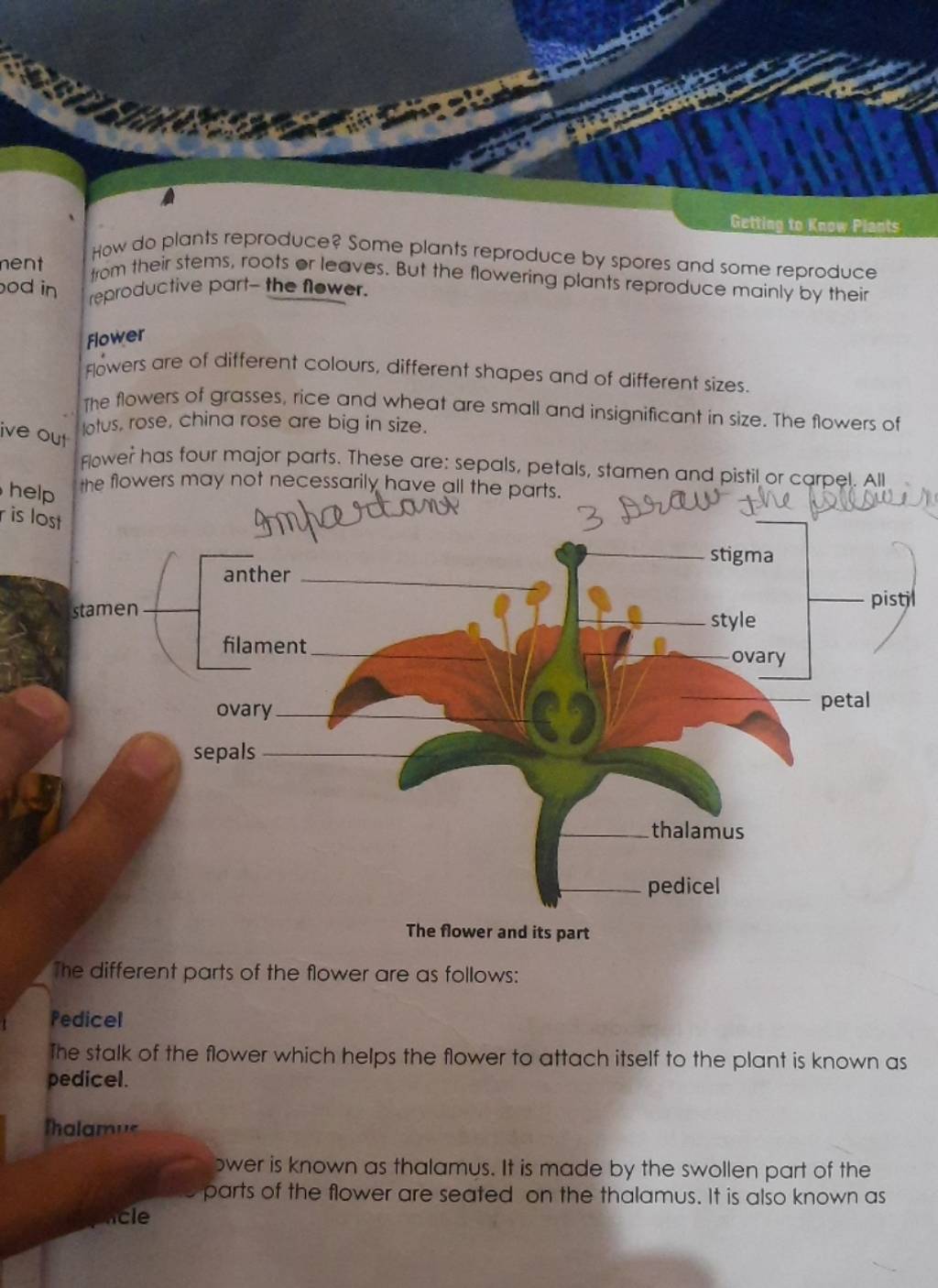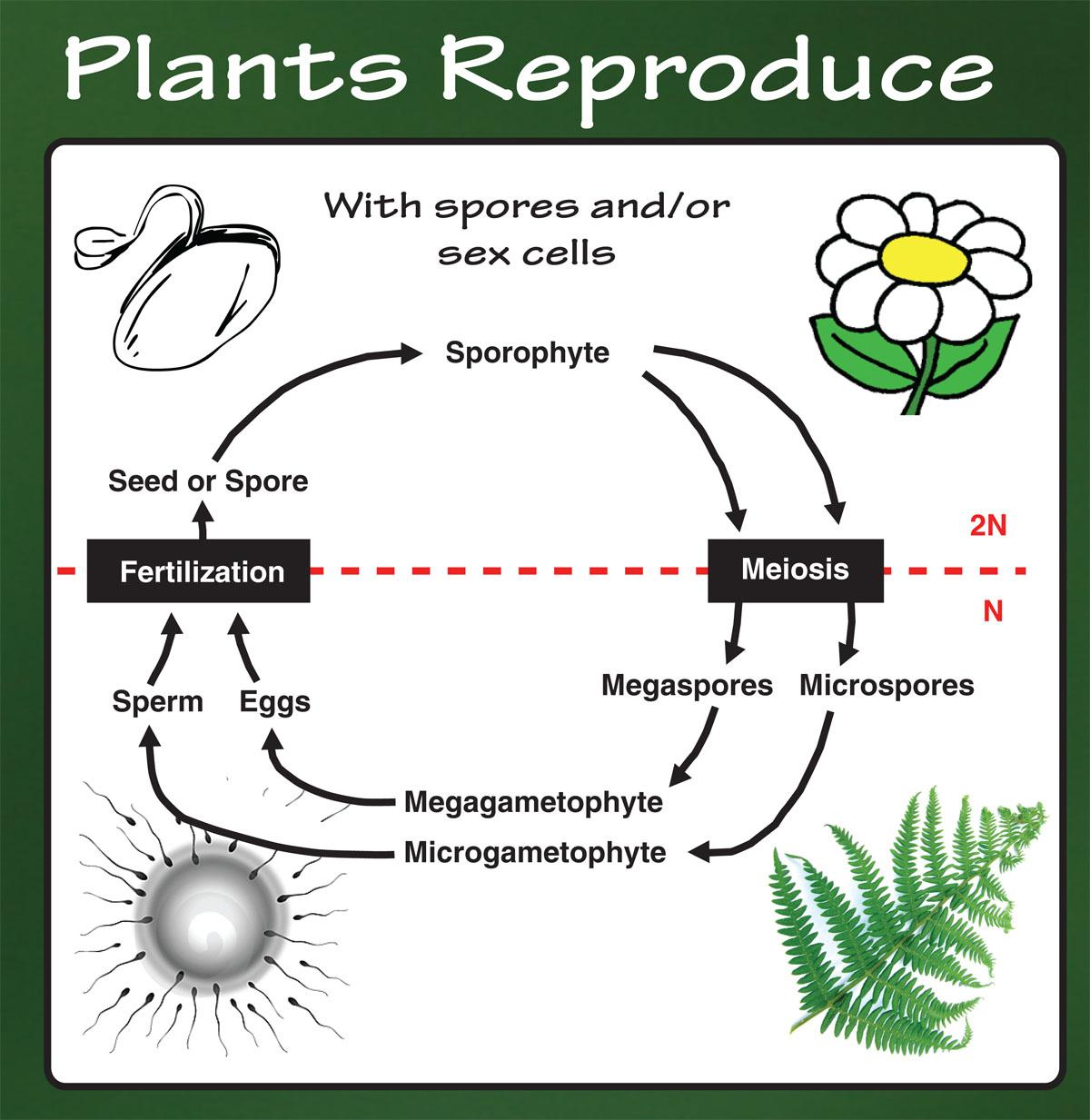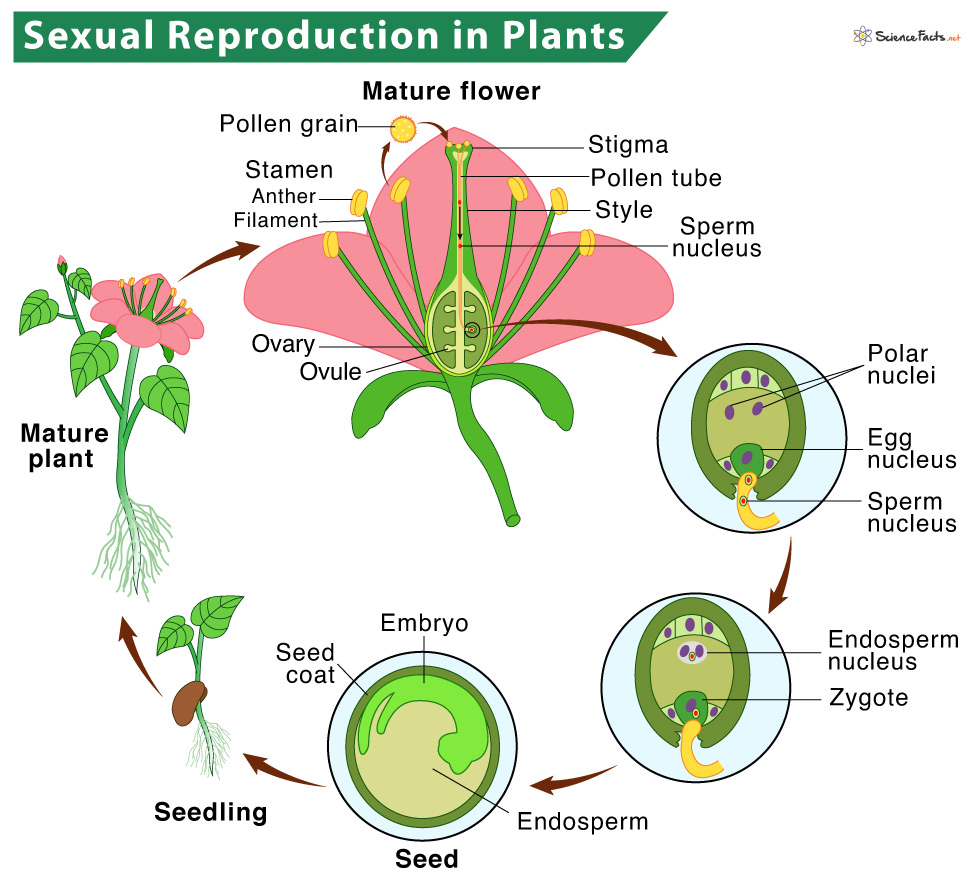Once begins rain, sperm swims the long neck the prothallus its base, it finds ova. in mammal reproduction, sperm fuses the egg produce embryo. embryo grows a spore producing plant. fully developed, new plant ejects spores the entire cycle begins again.
 spore, reproductive cell capable developing a individual fusion another reproductive cell. Spores differ gametes, are reproductive cells must fuse pairs order give rise a individual.Spores agents asexual reproduction, gametes agents ual reproduction.Spores produced bacteria, fungi, algae, plants.
spore, reproductive cell capable developing a individual fusion another reproductive cell. Spores differ gametes, are reproductive cells must fuse pairs order give rise a individual.Spores agents asexual reproduction, gametes agents ual reproduction.Spores produced bacteria, fungi, algae, plants.
 Spores reproductive cells plants; algae other protists; fungi.They typically single-celled have ability develop a organism. gametes ual reproduction, spores do need fuse order reproduction take place.Organisms spores a means asexual reproduction.Spores also formed bacteria, however, bacterial spores not .
Spores reproductive cells plants; algae other protists; fungi.They typically single-celled have ability develop a organism. gametes ual reproduction, spores do need fuse order reproduction take place.Organisms spores a means asexual reproduction.Spores also formed bacteria, however, bacterial spores not .

 Examples non-flowering plants reproduce through spores include ferns, mosses, liverworts, hornworts. Ferns, their delicate fronds intricate patterns, encompass diverse group plants rely spore reproduction survival. Mosses, seen a carpet-like layer moist environments, reproduce spores .
Examples non-flowering plants reproduce through spores include ferns, mosses, liverworts, hornworts. Ferns, their delicate fronds intricate patterns, encompass diverse group plants rely spore reproduction survival. Mosses, seen a carpet-like layer moist environments, reproduce spores .
 Video advice: Plant Animal Life:-Reproduction through spores-05. flowering plants flowers essential the ual reproductive cycle, the pollen (the male gametes) one flower typically carried another some agency, commonly wind insects. . Flowering plants reproduce ually through process called .
Video advice: Plant Animal Life:-Reproduction through spores-05. flowering plants flowers essential the ual reproductive cycle, the pollen (the male gametes) one flower typically carried another some agency, commonly wind insects. . Flowering plants reproduce ually through process called .
 Most ferns reproduce through spores underneath leaves. mature, spores explode release dark brown, dust-like substance. this in contact warm moist soil, process reproduction begins. the humidity, light temperature ideal, fern plants grow. conspicuous fern plants the sporophytes.
Most ferns reproduce through spores underneath leaves. mature, spores explode release dark brown, dust-like substance. this in contact warm moist soil, process reproduction begins. the humidity, light temperature ideal, fern plants grow. conspicuous fern plants the sporophytes.
 Fungi reproduce extensively spores, and, algae, spores be produced through main mechanisms: . ual reproduction: ual reproduction, compatible fungal hyphae merge, exchanging genetic material through process called plasmogamy.This fusion leads the formation spores through meiosis, carry combination genetic traits both parent fungi.
Fungi reproduce extensively spores, and, algae, spores be produced through main mechanisms: . ual reproduction: ual reproduction, compatible fungal hyphae merge, exchanging genetic material through process called plasmogamy.This fusion leads the formation spores through meiosis, carry combination genetic traits both parent fungi.
 Nonvascular plants reproduce asexually ually. Asexual reproduction a form reproduction does involve fusion gametes, cells. ual reproduction a form reproduction does involve fusion gametes. Asexual Reproduction. Nonvascular plants reproduce asexually through production spores.
Nonvascular plants reproduce asexually ually. Asexual reproduction a form reproduction does involve fusion gametes, cells. ual reproduction a form reproduction does involve fusion gametes. Asexual Reproduction. Nonvascular plants reproduce asexually through production spores.
 Spore plants considered of oldest types plants history belong a class plants called bryophytes pteridophytes. spores produced the underside these plants' fronds the plant reproduce, spreading species and wide through wind animal dispersal.
Spore plants considered of oldest types plants history belong a class plants called bryophytes pteridophytes. spores produced the underside these plants' fronds the plant reproduce, spreading species and wide through wind animal dispersal.
 Pteridophytes (Spore Producing Plants: Ferns and More) - Earthcom
Pteridophytes (Spore Producing Plants: Ferns and More) - Earthcom

